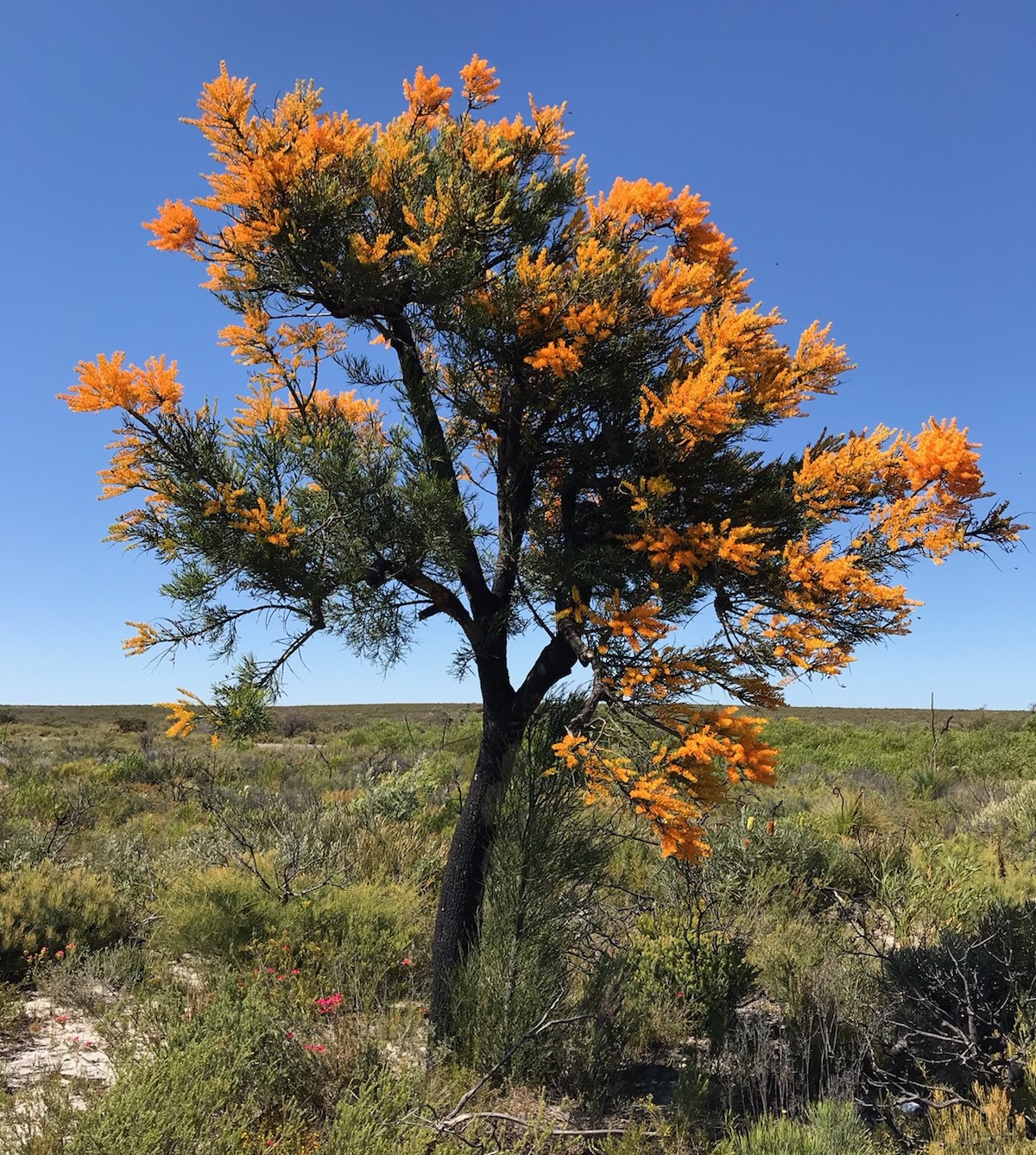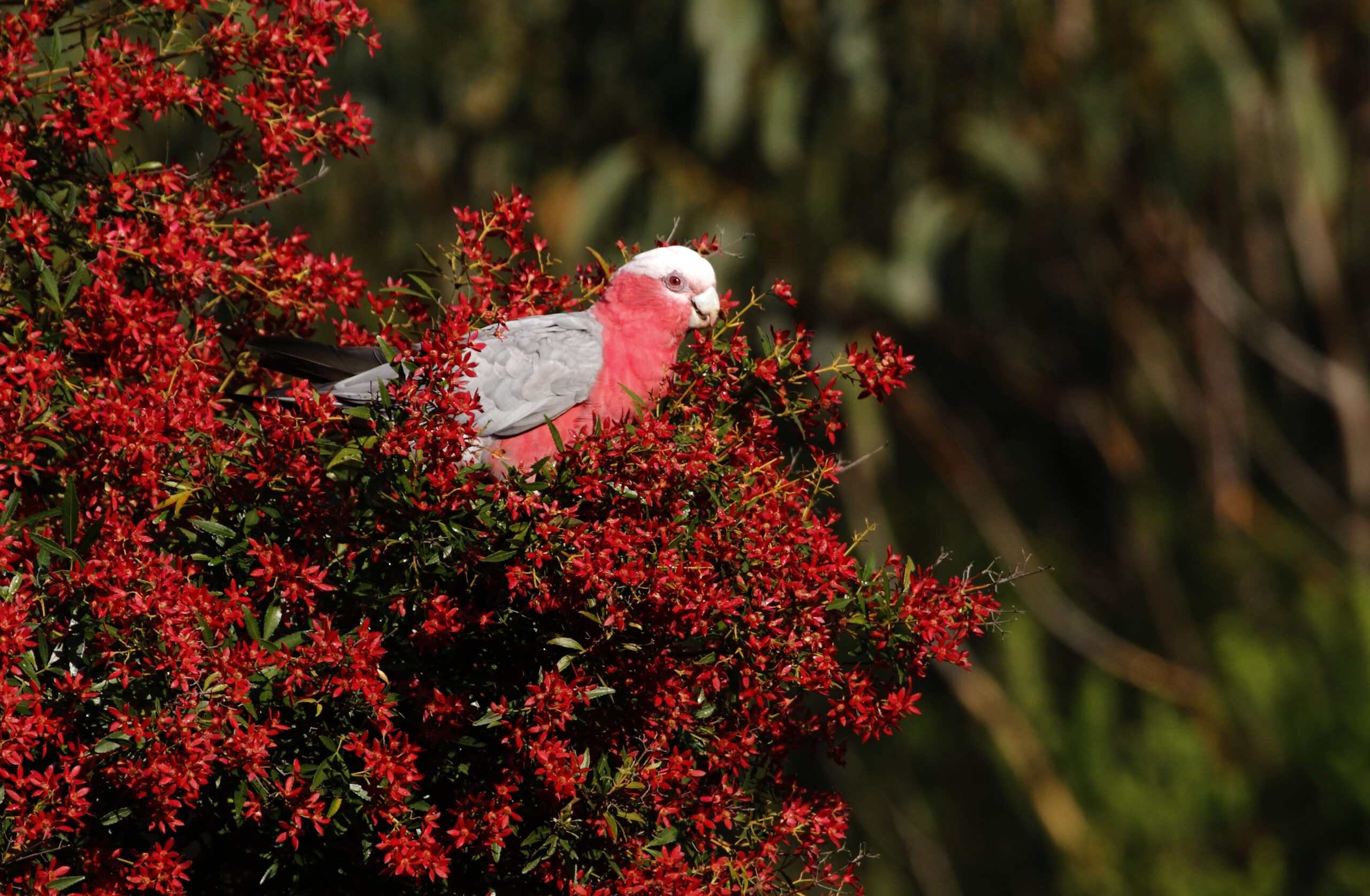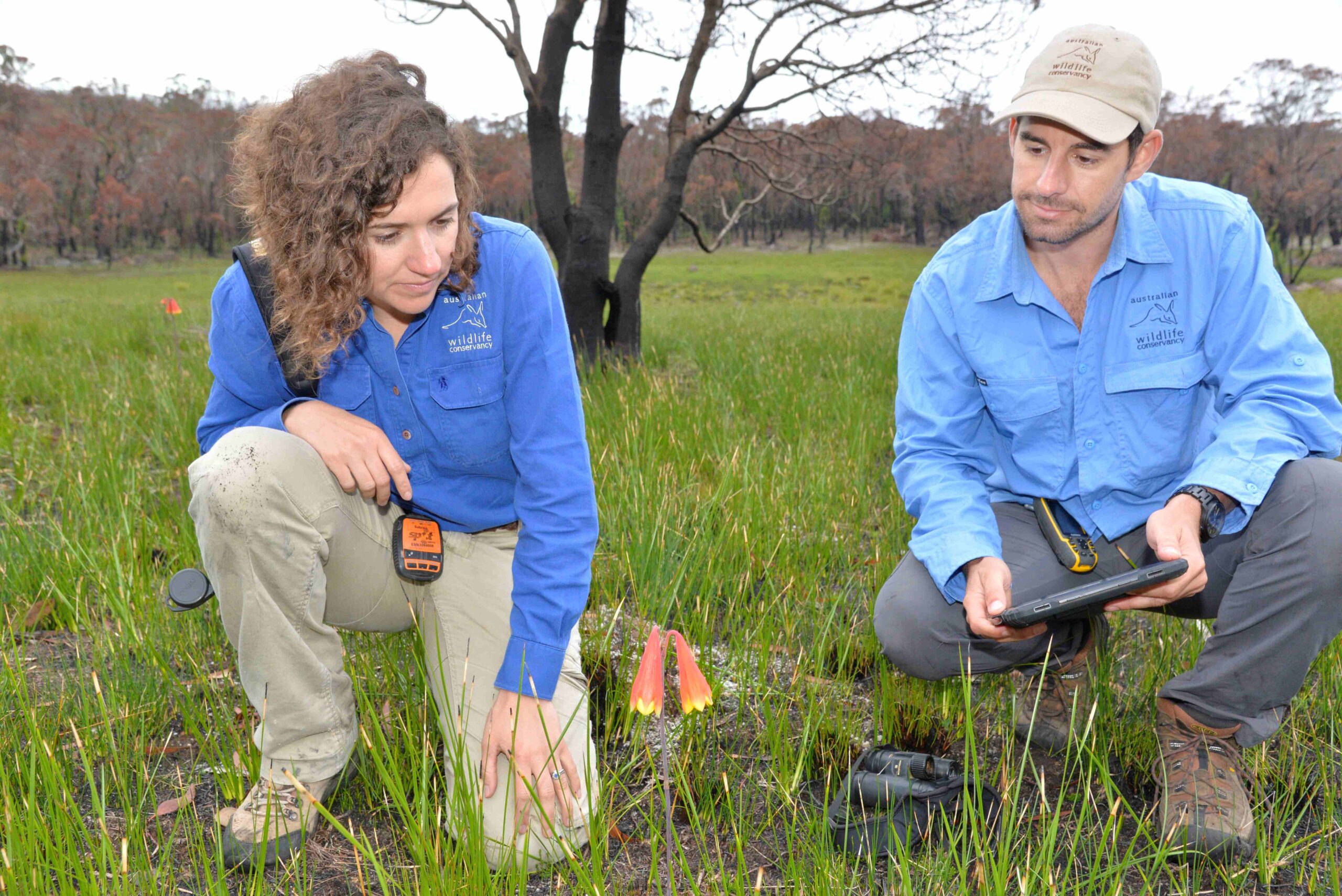Gaudy fairy lights, sun-scorched shoulders, and backyard barbeques – all hallmarks for a classic Aussie Christmas. But have you ever wondered whether your evergreen Christmas tree could be a little more… true blue? Get ready to meet a few of Australia’s many delightful Christmas plants. These unique species embody the Australian character, supporting their communities, demonstrating remarkable resilience, and bringing colour and personality to close the year with a bloom!
 Richard McLellan
Richard McLellan
Wielding sickle-like blades sharp enough to draw blood, you might think twice about kissing under this mistletoe. Believed to be the world’s largest parasite, the Western Australian Christmas tree is no minor mistletoe. One of few ancient ancestors to the more commonly known aerial mistletoes, this iconic tree grows to ten meters tall and has been likened to a ‘bushfire without smoke,’ thanks to its ember-bright, often fire-prompted summer blooms.
If its size above the ground impresses you, that’s nothing to its reach below. Its roots creep out indiscriminately, stabbing hordes of species up to 110 meters away, from which it draws water and nutrients. The tree blindly targets any species it can reach, from trees to shrubs to grasses, wrapping a collar of tissue around its victim’s roots ‘like a swollen wedding ring’, within which a hydraulically operated blade forms. In its sprawling reach for nutrients, it has been seen attacking twigs, cutting power by slicing through buried electrical cables and telephone lines, and even cutting itself by mistake.
Despite these sinister sounding adaptations, the species doesn’t depend on sucking the life out of its neighbours. Instead, it performs its own photosynthesis and aids its nutrient intake by using them as a diverse resource pool.
Though all mistletoes are classified as full or partial parasites, botanists say their relationship with hosts is often symbiotic, with aerial mistletoes sharing resources and attracting pollinators by providing good nesting and food resources.
AWC Botanist Rigel Jensen says the even and liberal presence of mistletoe is also a good indicator of a healthy ecosystem, suggesting favourable weather conditions and well managed fire patterns. The team at Mt Gibson Wildlife Sanctuary (on the traditional lands of the Badimia and Widi people, Western Australia) are taking the use of these species one step further, using mistletoes to monitor the population growth of Brushtail Possums, a reintroduced species which feeds on the plant.
 Gerry Pearce/Alamy Stock Photo
Gerry Pearce/Alamy Stock Photo
Found at Scotia Wildlife Sanctuary and in the Pilliga, this beloved species is best known for the sudden enlargement and red flush of its star-shaped sepals, peaking at Christmas. This colour likely signals for parrots to come eat its seed, aiding with dispersal. Though these red structures are often mistaken for petals, the plant’s inconspicuous white flowers actually form a few months earlier, attracting an abundance of insects – particularly native bees—with its fragrance. In the Pilliga, where Australian Wildlife Conservancy (AWC) works in partnership with the New South Wales National Parks and Wildlife Service, its foliage provides important sustenance for the larvae of the Dark Pencil Blue butterfly.
This beautiful species once gripped the hearts of Australians across the east coast in a fervour so tremendous that end-of-year prosecutions for the theft of the species’ branches were numerous, with imprisonment fines equal to 21 days imprisonment. A 1939 newspaper described the frenzy as follows:
‘Hundreds of women bought it, raved about it, buried their faces in it. Heaven only knows how they carried the bunch of native flowers. Many already had sufficient parcels to fill a billy cart; but somehow they managed it… and even then could manage a smile.’
 Wayne Lawler/AWC
Wayne Lawler/AWC
These bells may not jingle, but they do come with one. Like the New South Wales Christmas bush, this plant was once a household name for Australians, with an early 20th Century carol singing praise to the ‘magic spell’ that is this ‘heart’s delight’ coming into bloom in the heat of Christmas. Though their robust scarlet, salmon and saffron flowers resist fading in even the highest of temperatures, these slow-growing plants are far from immune to climate change.
Uncontrolled wildfires wreak havoc on the sensitive wet heathland ecosystems this plant prefers. The regrowth of weeds in unmanaged areas further exacerbates these damages, commonly choking out wildfire survivors. Christmas Bell species are protected by AWC’s best-practice fire and weed management work at Mallee Cliffs National Park, Scotia Wildlife Sanctuary, and in the Pilliga project area.
The pictured Bells were found by AWC ecologists at Bezzant’s Lease during our work to assist South Endeavor Trust in mapping what species had survived 2020’s black summer wildfire. This effort was part of AWC’s broader commitment to supporting various non-government organisations in the aftermath of this devastation.
AWC ecologist Andrew Howe says:
“We came across these Christmas Bells in the montane peat swamps on the property. These ecological communities are endangered and were burnt to bare ground during the fires. To find these and a couple other plants flowering was a welcome sight, given the torched black forests that surrounded us.”
Other threatened and iconic species detected during surveys on Bezzant’s Lease included: the Spotted-tail Quoll, Koala, Varied Sitella, Brown Treecreeper, Greater Glider, and Common Wombat. These inventories help with post-fire land management, allowing land managers to quantify damage and implement tailored supportive measures for affected species.
As summer’s heat continues to ramp up, AWC is working hard to protect flora and fauna across Australia. Please consider donating this Christmas to support our crucial science-informed conservation work and give hope to Australia’s countless irreplaceable species.
Help us protect Australia's native plants and the wildlife they support this Christmas
Donate Now